
This article covers surf fishing basics:
What is surf fishing?
Surf fishing is a land-based game fishing method that involves standing on and casting from the shore or shoreline. While typically done on the beach, anglers cast out from rocky jetties, piers, or in the water itself. Its popularity transcends borders and is a popular pastime in the United States and the United Kingdom. Many believe that surf fishing is simply about casting long and far, but some surf fishers like to cast into knee-deep water to fish what they call “the skinny.” Of course, different distances will yield different species, but whether you plan to cast a mile away or just a few feet, great surf fishers know the basics.
Equipment
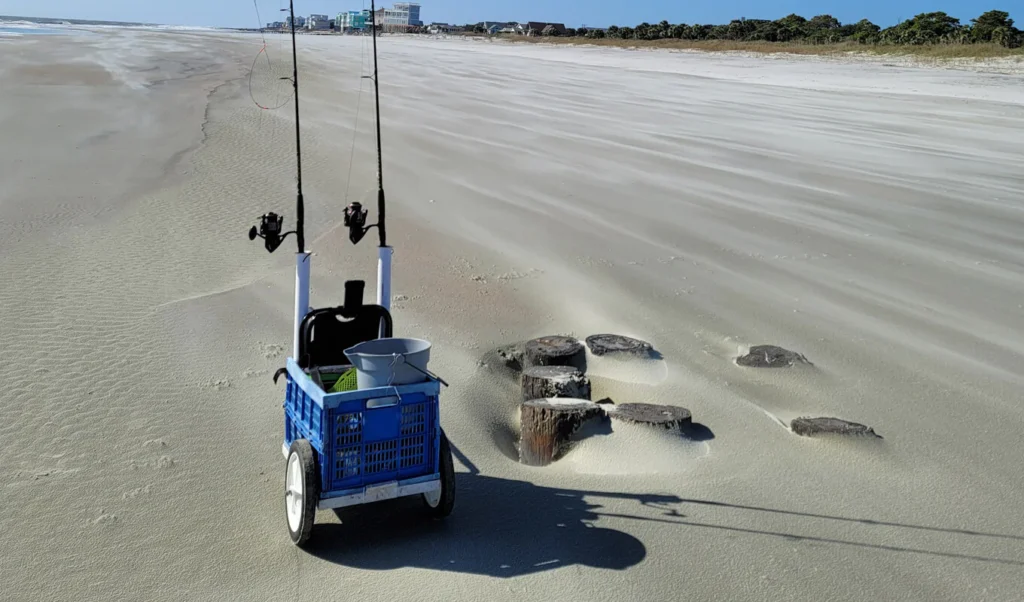
There are a few essential items necessary for a good day on the shore:
The Rod: The longer the rod, the further the cast. This is standard wisdom in the surf fishing world, but it is particularly advantageous considering casting is done from the shore. A surf fishing rod has an extended butt and ranges between 7–18 feet, but most surf anglers use a rod between 10–12 feet. Short rods cannot cast as far, and rods longer than 12 feet are generally unwieldy and decrease accuracy. While fish caught from surf fishing tend not to exceed 10 lbs, bigger fish can break a rod. So it’s wise to have a suitable rod for the job — you’d hate for your rod to snap when you start. Power, when it comes to rods, indicates how much weight or stress a rod can take, and medium to heavy power rods are the best choice for surf fishing.
The Line: Choosing the right line is equally important. Many surf fishers prefer braided lines, which range between 25–60 lbs. It all depends on when, where, and what you’re fishing for. Exercise caution when using a braided line, as it is notoriously sharp and often cuts the skin.
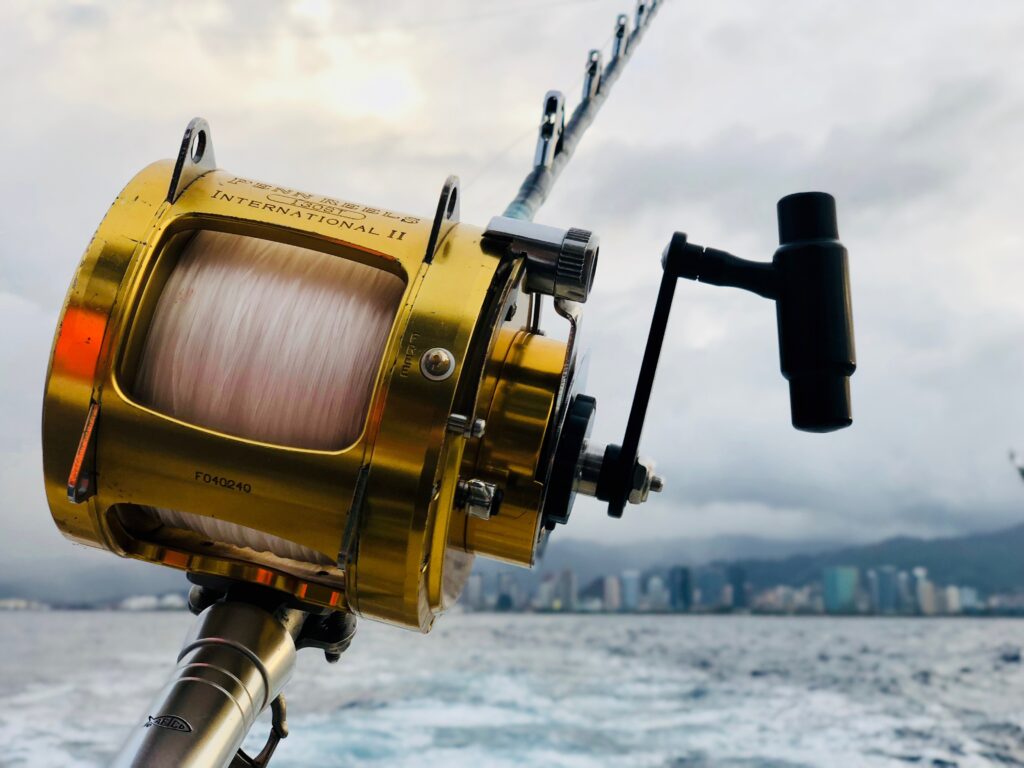
The Weight: The weight is integral to surf fishing; otherwise, your bait and tackle will be lost to the waves. A good standardized weight that fits most conditions is a 3–4 ounce pyramid or breakaway sinker. There is a lot to consider when choosing a weight for surf fishing, as an ideal weight aids with momentum, sinks to the bottom quickly, and is resistant to currents.
The Shock Leader: Before tying on tackle, a shock leader is essential for surf fishing. The power of the cast combined with a heavy weight adds stress to the line, and, as a result, many beginners break their lines. A shock leader absorbs the shock, takes stress off the line, and attaches to the line via a square knot.
Casting Techniques
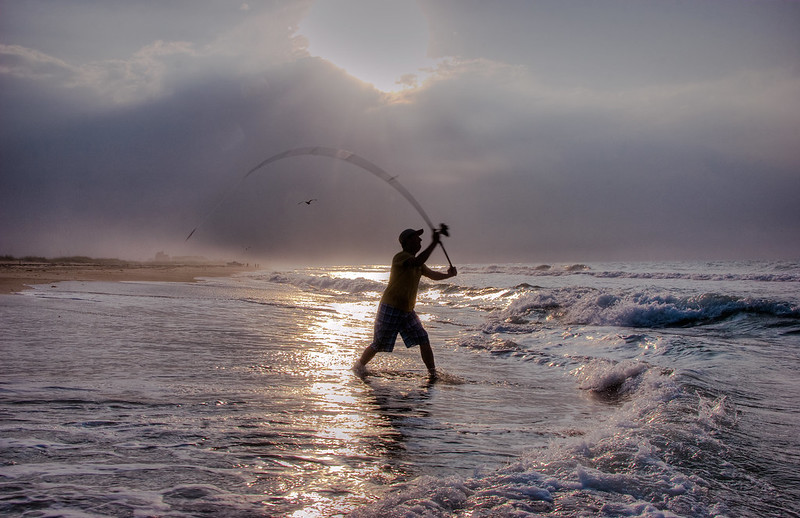
To maximize distance and accuracy, surf fishers tend to employ these three techniques:
The Overhead: The common overhead cast is seen throughout the casting and angling world and is especially popular among fly fishers. But unlike other forms of the sport, surf fishers use two hands. Starting with stance, stand with feet shoulder-width apart with the rod towards the water and your body at 45 degrees to the water. Grasp the rod firmly with both hands — one by the reel and one towards the bottom of the butt. Upper arm with elbow bent, bring rod above the head, twist, and cast.
Off-The-Ground: While the name of this cast can conjure images of levitation, a more apt description would be “from the ground.” Beginning with stance, feet should be set shoulder-width apart like the overhead cast. However, unlike the previous cast, the bottom hand will be by the reel, and the top hand will be further up the rod at an extended position. In this cast, give yourself some slack on the line and lay the weight on the ground at a 45-degree angle. From here, it’s as easy as putting the rod in front of you, twisting, and casting.
The Pendulum: The pendulum cast is by far the most difficult and finds its roots in the competitive casting circuit. This technique can cast distances over 700 feet, and the current world record for the longest cast — held by Danny Moeskops — utilized this technique to cast out 915.22 feet. Stance and hand placement will mirror the off-the-ground cast, but the method is particular. Pendulum casts rely on momentum, as the name suggests, and require a precise and practiced motion: face opposite from the water, angle your rod upwards, swing the weight outward, swing the weight inwards, then swing back out while turning and cast.
Surfcasting & Beachcasting
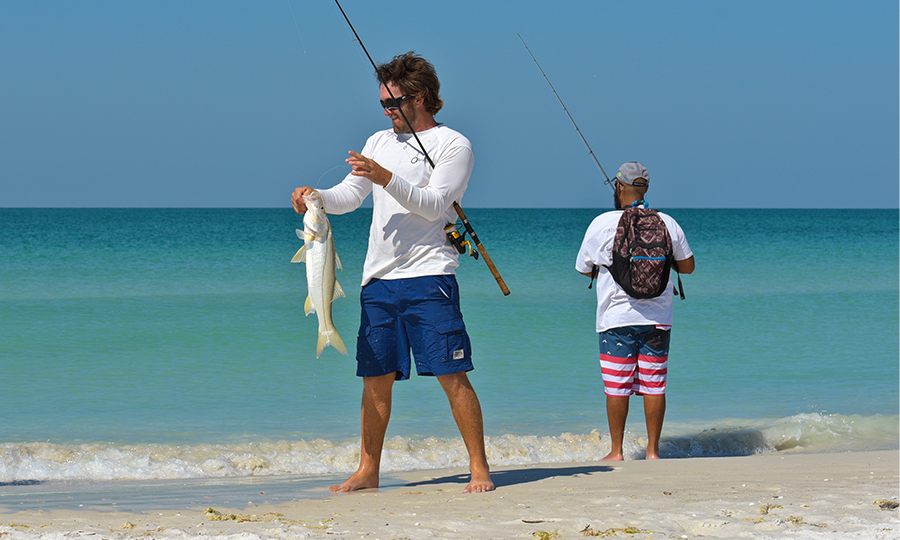
If you search for surf fishers, you’ll likely come across surfcasting. Subsets of surf fishing, surfcasting, and beachcasting are synonymous terms that refer to a style of land-based fishing. Surfcasters employ two-handed casting techniques and use full-body movements to extend their cast. Although used interchangeably, a few significant differences between surfcasting and beachcasting exist. Beachcasting is a term largely used in the British Isles, and the sport is an extremely popular pastime in England, Wales, Scotland, and Ireland. Beachcasters use rods between 12–16 feet and typically use 60+ lb fishing lines.
Skishing
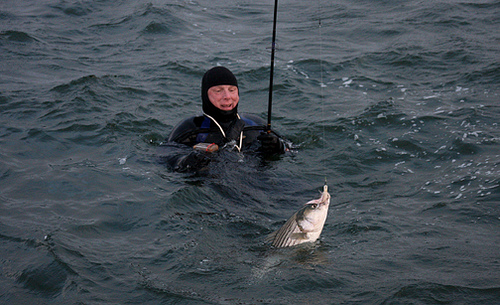
Skishing (skiing + fishing) is a child of surfcasting, but it takes fishing to a new extreme. In skishing, anglers wear wetsuits and flippers and swim into the ocean with a surfcasting pole. Their attire keeps them buoyant and their heads above water. Of course, they don’t have the advantages of being on land, so many skishers believe this puts them on equal footing with their prey. If hooking a large enough fish, it’s common to see a skisher being pulled through the water like a skier.
So, whether you’re fishing from the sea or beach, surf fishing — and all its subsets — appeals to all audiences. Now that you know the basics, take a stance, raise your rod, and cast!
Surf Fishing FAQs
In surf fishing, what is knee-deep water called?
In Surf fishing, knee-deep water is called “the skinny.”
What is a good weight range for fishing lines in surf fishing?
A good weight for fishing lines is between 25–60 lbs
What is a good length for a surf fishing rod?
A surf fishing rod has an extended butt and ranges between 7–18 feet, but most surf anglers use a rod between 10–12 feet.
What does a shock leader do?
A shock leader absorbs the shock, takes stress off the line, and attaches to the line via a square knot.
What is the current world record for the longest cast?
The longest cast on record was by a man named Danny Moeskops, and it was 915.22 feet far.
Where is beachcasting popular?
Beachcasting is much like surf casting or surf fishing, and beachcasting is very popular in the British Isles.
What is skishing?
The term skishing is a portmanteau that combines skiing and fishing.
This article was originally published on February 27, 2023.

